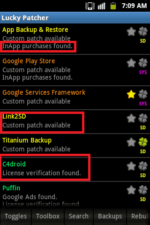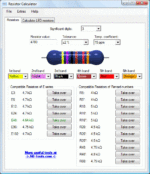
When marketers wish for more time and resources, they often wish to spend it on video marketing.
Well, what if you only needed six seconds of video to make your impression?
The current run of 6-second ads on platforms like YouTube and Twitter has opened up new options for marketers who are looking to get their message heard via video without going overboard on video resources.
We’ve taken YouTube’s best practices and looked at the list of the best six-second ads to find all the secret ingredients behind short and snappy video marketing. We think these tips will help you craft the perfect YouTube bumper ad, Twitter video, Instagram story — you name it — and will make video marketing a cinch for you and your brand.
The benefits of being on YouTube
YouTube is a bit of a different animal when it comes to social media marketing, particularly because it has such a heavy emphasis on, well, video content. On Twitter, you can type out a message and hit send. On Instagram, you can upload a pretty photo or a meme.
On YouTube, you have to create a whole video!
We’ve written lots before about how to create awesome videos, whether you’re a newbie or on a budget .. or a seasoned pro. As with most marketing activities, it’s not as difficult as it might look at first. The hardest part is getting going.
Still, it can feel like a big hill to climb.
So why bother climbing?
Well there are a couple strong points in your favor for putting in the work and making things happen on Youtube.
First, YouTube is gigantic.
Chances are that if you’re targeting consumers, then consumers will have some sort of connection with YouTube.
Take these stats for instance:
- YouTube has over 1.9 billion monthly active users.
- In the U.S. over 90% of 18-44-year-olds watch videos on YouTube.
- Not to mention that YouTube is the world’s second largest search engine and the second most popular website behind Google.
Now, we’re not necessarily talking about becoming a YouTube influencer or growing your channel to millions of subscribers and views. That would be great, of course. But it’s not needed in order to get value from YouTube.
Spending some of your ads budget on YouTube ads can help you reach a targeted audience through a medium that is engaging and very strong on the storytelling side.
Which brings us to the second reason why it might make sense to invest some in YouTube advertising …
One of YouTube’s best formats is six-second video ads.
You don’t have to make a mini movie or spend a lot of time and resources to build something long and lasting. You simply have to fill six seconds of time with a catchy, on-brand message.
Seem doable?
A lot of brands think so, which is why the ads format on YouTube has proliferated. There are a lot of options now — and if you spend much time on YouTube, you’ve probably seen a lot of variety in the ads also. It’s becoming a hot space.
We’ll cover some of the basics of this ad format and then spend the majority of the episode diving into what makes a great YouTube ad by studying some of the best ones out there.
Your YouTube ad options for videos
YouTube offers three types of video ads
- Skippable video ads that viewers can skip after five seconds. These ads come before, during, or after the main video.
- Non-skippable video ads must be watched before your video can be viewed. These are a maximum of 15-20 seconds long
- Non-skippable video ads that can be up to 6 seconds.
Specifically for this blog post, we’re going to focus on the six-second ads. These appear in the pre-roll — the ad that shows right before your video starts.
Because of this, you pay for bumper ads by impressions. They are charged by CPM – cost per thousand impressions, meaning that you pay for a bumper ad for every 1,000 impressions of your video.
YouTube ads typically have an average cost-per-view of $0.10 – $0.30. And according to an AdStage report, in 2018 the average CPM on YouTube was $9.68. Additionally, the average cost per click was $3.21 and the average click-through rate (CTR) on YouTube was 0.33%.
How does this compare to other social networks?
It’s on the higher end because of the high engagement on YouTube’s video ads. Facebook is near $9.00 CPM, but Instagram, Twitter, and LinkedIn benchmarks are closer to $6.00.
Best examples of six-second ads on YouTube
YouTube recently announced its list of the top six-second ads from the past year. The list included:
- Subaru
- Frito-Lay
- Doritos
- Oreo
- Eggo
- Almond Joy
- and many morePersonally, I love what Geico dos with six-second ads: they’re often quite brilliant and funny and play with the form really well. What do all these videos have in common? There are a few elements that we noticed, plus YouTube has shared some of the qualities that it believes are key to a successful ad and video on its network.
How to make a successful YouTube ad
1. Put your brand front-and-center
There are a couple reasons for this. Featuring your brand early on will help orient the viewer and increase engagement with your ad. Also, the first few seconds of the video are crucial, whether you’re making a longform video or a six-second ad.
YouTube recommends starting with a powerful brand moment rather than a slow build. And of course, when making a six-second ad, you don’t really have time for a slow build!
You can do this in a lot of different ways. If you have a product, you can feature it in the first frames, as Doritos does in its six-second ads. Other brands start with a shot of their logo or a logo overlay onto the video.
2. Use catchy music and sounds.
95% of video watched on YouTube are played with the sound on, so music and voice are an essential component to your ad’s success. This is a bit different from other social platforms where sound is often turned off and captions are necessary. You don’t need any captions here.
If your ad doesn’t necessarily have a strong audio component, another way to capture attention is from quick editing. This is obviously used quite well in the six-second ad formats.
By putting multiple shots into the first few seconds, you can capture attention quite well.
Looking at some of the top 6-second ads on YouTube, for example, Doritos put five shots into its six seconds, and Dove had seven shots — more than one shot per second.
3. Think mobile-first when building your ad.
The majority of YouTube watching happens on mobile devices, so you’ll want to consider this experience when you’re coming up with your ad idea and your production. For instance, consider how people are using their phones — people may be watching on battery saving mode which means darker screens and less visibility, so bright colors and big text will make the biggest impact in your ad.
Ok, let’s take a quick music break and then come back with some final advice on making the most of your YouTube ads.
Strategy: What are six-second ads good for?
It’s not a lot of time to drive an action from your viewer, which might be why a lot of brands use the short videos for increasing brand awareness.
Of course, this comes with challenges of its own. How do you even measure brand awareness?
YouTube has thought of this. They offer a brand lift survey that you can run to measure the direct impact that your ad is having on the perception of your brand and the behaviors that you’re influencing. The survey measures a number of different factors:
- increases in brand awareness
- ad recall
- consideration
- favorability
- purchase intent
- brand interest
They even let you optimize your campaigns while they’re happening, based on the results from this brand lift survey.
Of course, if a Youtube brand lift study is outside of your budget, there are other ways to measure its impact, too. You can look at foundational metrics like view rate and click-through rate to determine which of your ads are working well.
Now there has been talk about the super-short ad format being too short to effectively communicate a message. There may be some truth to that, but at the same time, there is science and research behind just how quickly we’re able to process ads.
In a recent study, brain researchers found that mobile ads can trigger an emotional response in less than half a second. The brain only needs 400 milliseconds to see and react emotionally to mobile ads. YouTube in particular has a couple things in its favor: video ads were twice as likely to stimulate an emotional response than static images, and mobile ads are a full one to two seconds faster to get a response than desktop ads.
Strategy: Cross-channel marketing
We’re big fans of repurposing content here at Buffer. We love taking a blog post and turning it into a SlideShare, a podcast episode, an infographic, and more. So we think it’s great to be able to do the same with ads.
Fortunately, there’s not much that needs changed with six-second videos because so many other places support this short format.
I’m sure you’ve started to see this format on places like Hulu and other streaming services. On the social media side, Twitter has recently rolled out 6-second ads as a new ad type. Early tests with some brands on Twitter have shown up to a 22% increase in view rate.
What’s really interesting, as we mentioned earlier, not everyone browses Twitter with the sound on. So if you’re planning on using your short YouTube video ads on other social networks, it might be useful to really lean into the strong visual branding side of things.
In fact, a study by EyeSee showed that short-form videos with the sound-off that included clear branding, delivered a significantly better ad recall and message association compared to typical TV-style ads.
Alright, one final strategic point we wanted to share is more like a quick time saver. When it comes to making short, six-second YouTube ads, you may not even need to start from scratch.
Tip: You can repurpose existing ads and have YouTube cut them down to six seconds for you.
That’s right, This year, YouTube began testing a tool called Bumper Machine that optimizes video ads for mobile audiences. The tool uses machine learning to pick out key moments from longer ads and convert them into the six-second bumper ads that we’ve been talking about this episode.
Some of the elements that the machine learning algorithms are looking for are:
- human characters
- motion
- the sharpness of the video’s focus
- the quality of the framing
So if you’re looking to create a short ad to try out on YouTube, you may be able to test quite easily by repurposing a well-performing ad to work in the six-second format.
We’ve had a lot of fun researching short ads for this episode. If you have any personal favorites, we’d love to hear from you. Feel free to send us a link on Twitter, Instagram, or Facebook, and use hashtag #bufferpodcast so that we can spot it!








